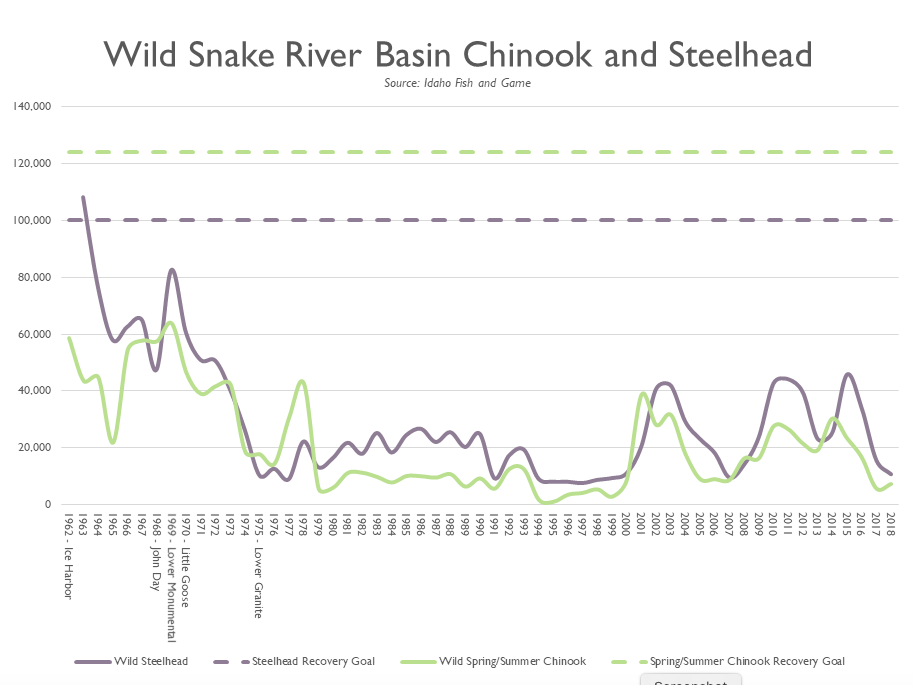forum
library
tutorial
contact

Hatcheries Begin Collecting
Fish at Dam
by Staff
Moscow-Pullman Daily News, August 21, 2020
|
the film forum library tutorial contact |

|
Hatcheries Begin Collecting
by Staff
|
Since wild fish don’t typically show up at hatchery traps,
the agencies opted to trap at the dam.
 Hatchery officials from the Washington Department of Fish and Wildlife and Nez Perce Tribe began collecting fall chinook for spawning as they passed Lower Granite Dam this week, at the same time the fishing season for fall chinook salmon opened in Washington and Idaho.
Hatchery officials from the Washington Department of Fish and Wildlife and Nez Perce Tribe began collecting fall chinook for spawning as they passed Lower Granite Dam this week, at the same time the fishing season for fall chinook salmon opened in Washington and Idaho.
The trapping is scheduled to continue into early September, and officials from both agencies want anglers to understand why they are collecting fish during the harvest season.
According to a blog post authored by the agencies, fall chinook used for spawning at the Lyons Ferry and Nez Perce Tribal hatcheries have always been collected at Lower Granite Dam and then trucked to the hatcheries. Both wild and hatchery fish are needed for spawning. Since wild fish don’t typically show up at hatchery traps, the agencies opted to trap at the dam.
This year, as in other recent years, the fish are being trapped earlier in the run. Steelhead also are trapped at Lower Granite Dam as part of a sampling program that tracks the strength and demographics of the run. Protocols to protect wild steelhead call for only about 20 percent of the run to be subjected to trapping and handling before the fish are released and allowed to progress upstream. In years with poor steelhead numbers, such as this one, it can be difficult to hit collection quotas for fall chinook without exceeding trapping and handling limits for steelhead.
To help ensure enough fall chinook are collected without exceeding the limits on steelhead, the agencies are front loading the collection of fall chinook and intercepting more of them earlier in the run, when there are fewer steelhead in the river.
Early trapping also makes it more likely that enough larger and wild fall chinook will enter the hatchery spawning program, according to the blog post.
The agencies plan to trap about 3,600 fall chinook for spawning at both hatcheries. The fall chinook run forecast calls for more than 18,000 adult salmon to return to the Snake River this year, leaving nearly 15,000 available for anglers. More information is available in the blog post.
Related Pages:
Fisheries Managers Forecast 'Unprecedentedly Low' Summer Steelhead by George Plaven, East Oregonian, 5/22/17
learn more on topics covered in the film
see the video
read the script
learn the songs
discussion forum
